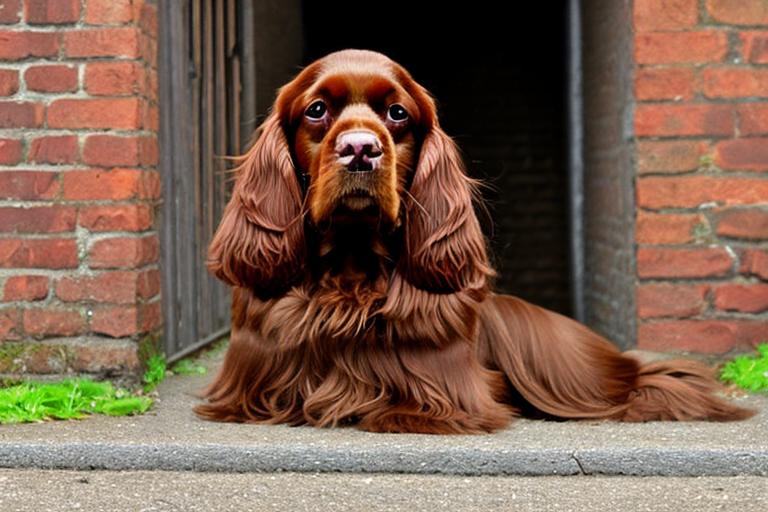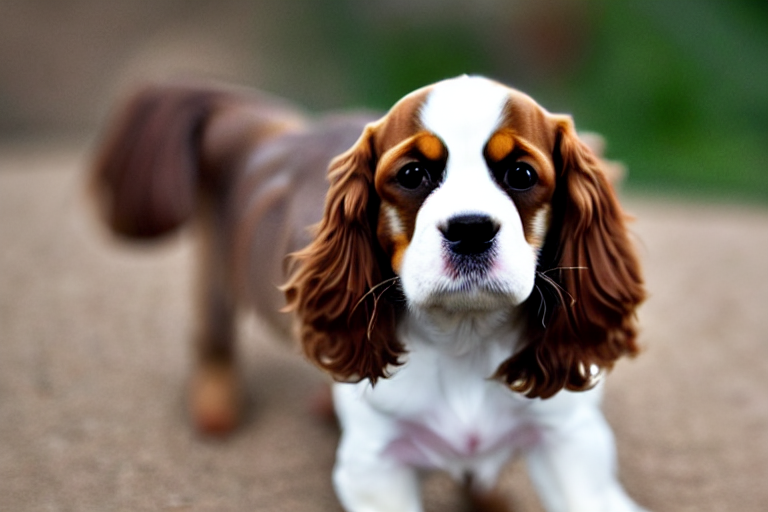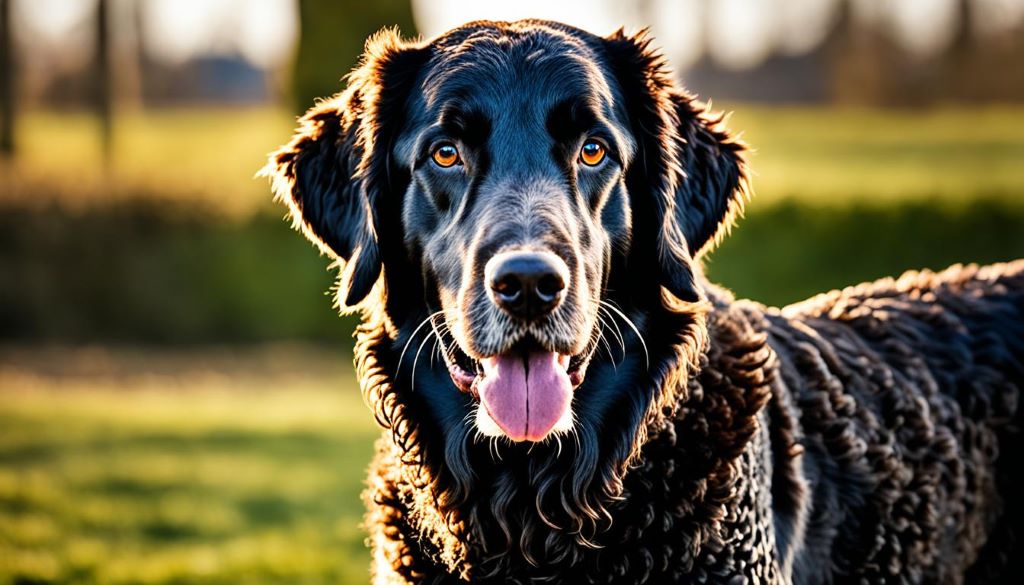Welcome to the world of Cocker Spaniels, a delightful and charming breed known for their intelligence, affectionate nature, and stunning looks. If you’re considering adding a Cocker Spaniel to your family, understanding their size variations is crucial. In this article, we will explore the factors that affect the size of Cocker Spaniels, the average size ranges, and specific information about American Cocker Spaniels, English Cocker Spaniels, as well as Miniature and Toy Cocker Spaniels. Let’s dive in!
Cocker Spaniel Breed Overview
Before we delve into the specifics of Cocker Spaniel sizes, let’s take a brief look at the history of this beloved breed and the popular types that exist.
Cocker Spaniels have a rich heritage, with origins dating back to 14th-century Spain. They were initially bred for their exceptional hunting skills and were used to flush out game birds. Over time, Cocker Spaniels evolved, and distinct variations emerged, such as the American Cocker Spaniel and the English Cocker Spaniel.
American Cocker Spaniel
The American Cocker Spaniel is a well-known breed with distinctive features. They are smaller in size compared to their English counterparts and have a compact, sturdy build. American Cockers are renowned for their silky, wavy coats and expressive eyes, making them irresistible to dog lovers.
English Cocker Spaniel
The English Cocker Spaniel, on the other hand, exhibits a slightly different physical appearance. They have a more athletic build, a longer muzzle, and a more pronounced brow. Their luxurious, feathered coat and friendly disposition make them highly sought after as companion pets.
Both American and English Cocker Spaniels share common traits, including their intelligence, trainability, and affectionate nature. Now, let’s explore the factors that influence the size of Cocker Spaniels.
Factors Affecting Cocker Spaniel Size
The size of a Cocker Spaniel can be influenced by various factors, including genetics, gender, and environmental influences. Understanding these factors will help you anticipate the potential size of your furry companion.
Genetics and Hereditary Traits
Genetics play a significant role in determining the size of Cocker Spaniels. The traits inherited from their parents and ancestors can influence whether they will fall within the smaller or larger end of the size spectrum. It’s essential to consider the bloodlines and breeding history when estimating the size of a Cocker Spaniel.
Gender Differences in Size
In general, male Cocker Spaniels tend to be slightly larger than females. However, it’s important to note that individual variations exist, and size is not solely determined by gender. Other factors, such as genetics and overall health, can also impact the size of both male and female Cocker Spaniels.
Environmental Influences on Growth
Environmental factors, including nutrition, exercise, and overall care, can influence the growth and size of Cocker Spaniels. Providing a balanced diet, ensuring regular exercise, and maintaining proper healthcare are essential for their optimal growth and development.
Average Size of Cocker Spaniels
To have a better understanding of Cocker Spaniel sizes, let’s explore the average height and weight ranges for adult dogs of this breed.
Height and Weight Range for Adult Cocker Spaniels
On average, adult Cocker Spaniels stand between 13.5 to 15.5 inches (34 to 39 cm) at the shoulder, and their weight typically ranges from 20 to 30 pounds (9 to 14 kg). However, it’s important to note that there can be variations within these ranges, and individual dogs may fall slightly above or below these averages.
Growth Patterns from Puppyhood to Adulthood
Cocker Spaniels undergo significant growth and development during their first year of life. As puppies, they experience rapid growth, and their size can change quite dramatically. However, the growth rate slows down as they approach adulthood, and their size becomes more stable.
American Cocker Spaniel Size
Now, let’s focus on the size variations specific to American Cocker Spaniels.
Typical Size Range for American Cocker Spaniels
American Cocker Spaniels are generally smaller than English Cocker Spaniels. They typically stand between 13.5 to 15.5 inches (34 to 39 cm) at the shoulder, with an average weight ranging from 20 to 30 pounds (9 to 14 kg). However, it’s important to note that individual American Cockers may fall outside these ranges.
Male vs. Female Size Differences
In terms of size, male American Cocker Spaniels tend to be slightly larger than females. Males usually fall at the higher end of the height and weight range, while females are often closer to the lower end. However, it’s important to consider that individual variation exists, and each dog should be assessed independently.
Variations in Size Based on Bloodlines
The size of American Cocker Spaniels can also vary depending on their bloodlines. Some bloodlines may consistently produce larger or smaller individuals. If you have a specific size preference, it’s advisable to discuss it with reputable breeders who have a good understanding of their bloodlines.
English Cocker Spaniel Size
Now, let’s turn our attention to the size variations found in English Cocker Spaniels.
Average Size of English Cocker Spaniels
English Cocker Spaniels are slightly larger than their American counterparts. On average, they stand between 15 to 17 inches (38 to 43 cm) at the shoulder and weigh around 26 to 34 pounds (12 to 15 kg). As with any breed, there can be individual variations in size, so these numbers serve as a general guideline.
Male vs. Female Size Variations
Male English Cocker Spaniels are typically larger than females, both in height and weight. Males often fall within the higher end of the size range, while females tend to be closer to the lower end. However, it’s essential to evaluate each dog individually, as there can be exceptions to this general pattern.
Comparison with American Cocker Spaniels
English Cocker Spaniels are generally taller and slightly heavier than American Cocker Spaniels. The differences in size between the two types reflect their distinct lineages and breeding histories. It’s important to consider these variations when selecting the right Cocker Spaniel for you.
Miniature and Toy Cocker Spaniels
In addition to American and English Cocker Spaniels, there are also Miniature and Toy Cocker Spaniels available. Let’s explore these smaller-sized Cockers.
Introduction to Miniature and Toy Cocker Spaniels
Miniature and Toy Cocker Spaniels are selectively bred to be smaller than the standard sizes. These variations can be adorable companions for individuals or families with limited living space.
Distinctive Characteristics and Size Differences
Miniature and Toy Cocker Spaniels have similar characteristics to their larger counterparts but in a more compact package. Miniatures usually stand around 11 to 14 inches (28 to 36 cm) tall at the shoulder and weigh between 15 to 25 pounds (7 to 11 kg). Toys, on the other hand, are even smaller, with a height of around 10 to 12 inches (25 to 30 cm) and a weight ranging from 10 to 15 pounds (4 to 7 kg).
Breeding Considerations for Smaller-Sized Cockers
Breeding smaller-sized Cocker Spaniels requires careful selection and consideration to maintain their health and well-being. Responsible breeders prioritize the health and temperament of their dogs to ensure the production of healthy, happy puppies.
Growth and Development Stages
Understanding the growth and development stages of Cocker Spaniels can help you monitor their progress and provide appropriate care.
Newborn Cocker Spaniels
When Cocker Spaniel puppies are born, they are incredibly small and vulnerable. They rely on their mother for nourishment and warmth during this crucial stage of their lives.
Growth Milestones during the First Year
During the first year, Cocker Spaniels experience significant growth and reach various developmental milestones. They go from tiny, helpless puppies to active and curious adolescents. Monitoring their growth and providing appropriate nutrition and veterinary care is vital for their overall well-being.
Factors Affecting Growth Rate
Several factors can influence the growth rate of Cocker Spaniels. Proper nutrition, regular exercise, and a supportive environment all contribute to healthy growth. Genetics also play a role, as some puppies may naturally develop at a different pace than others.
Feeding and Nutrition for Optimal Growth
To support the healthy growth of your Cocker Spaniel, it’s important to provide a balanced diet and appropriate nutrition.
Dietary Needs for Cocker Spaniels
Cocker Spaniels have specific dietary needs to ensure their overall health and well-being. A high-quality, age-appropriate dog food that meets their nutritional requirements is essential. Consult with your veterinarian to determine the best diet for your Cocker Spaniel based on their age, size, and individual needs.
Age-Appropriate Feeding Guidelines
As your Cocker Spaniel grows from a puppy to an adult, their dietary needs will change. It’s important to follow age-appropriate feeding guidelines to ensure they receive the right balance of nutrients. Puppies require more frequent meals and specific nutritional ratios to support their rapid growth, while adult dogs have different requirements to maintain their health.
Choosing the Right Food for Proper Growth
With so many dog food options available, selecting the right one for your Cocker Spaniel can be overwhelming. Look for high-quality dog foods that are specifically formulated for their age and size. Avoid foods with excessive fillers or artificial additives. Your veterinarian can provide recommendations tailored to your Cocker Spaniel’s specific needs.
Exercise and Physical Activity
Regular exercise is vital for the overall health and well-being of Cocker Spaniels. Let’s explore the importance of exercise and how to tailor routines to their size.
Importance of Exercise for Cocker Spaniels
Cocker Spaniels are active dogs with a moderate energy level. Regular exercise helps them burn off excess energy, maintain a healthy weight, and prevent behavioral problems associated with pent-up energy. Exercise also provides mental stimulation, keeping them engaged and happy.
Tailoring Exercise Routines to the Dog’s Size
The size of your Cocker Spaniel should be taken into account when planning their exercise routine. Smaller Cockers may have slightly lower exercise needs compared to their larger counterparts. Engaging in activities like walks, play sessions, and interactive toys can help keep them physically and mentally stimulated.
Preventing Obesity and Maintaining a Healthy Weight
Cocker Spaniels have a tendency to gain weight if their diet and exercise are not properly managed. Obesity can lead to various health issues and impact their overall quality of life. Regular exercise, portion control, and a balanced diet are essential for maintaining a healthy weight.
Health Issues Related to Size
While size itself may not directly cause health issues, certain conditions are more common in larger or smaller Cocker Spaniels.
Potential Health Concerns Associated with Large Cockers
Larger Cocker Spaniels may be more prone to certain health issues, such as hip dysplasia and ear infections. Regular veterinary check-ups and preventive care can help identify and address these issues early on.
Health Risks for Smaller-Sized Cockers
Smaller-sized Cockers, including Miniatures and Toys, may have specific health concerns associated with their size. These can include dental problems, luxating patella, and eye conditions. Regular veterinary care and attention to their unique needs can help mitigate these risks.
Common Orthopedic Problems in Cocker Spaniels
Cocker Spaniels, regardless of their size, can be susceptible to orthopedic problems. Conditions like hip dysplasia, patellar luxation, and intervertebral disc disease can occur. Maintaining a healthy weight, providing proper exercise, and avoiding excessive jumping or rough play can help reduce the risk of these issues.
Tips for Estimating Size
Estimating the potential size of a Cocker Spaniel can be helpful, especially when selecting a puppy. Here are some tips to consider:
Evaluating Size Potential in Cocker Spaniel Puppies
When looking at Cocker Spaniel puppies, observe their body structure, proportions, and bone size. While it’s not an exact science, these characteristics can provide clues about their potential size as they mature.
Observing Physical Characteristics and Proportions
Look for signs of balanced growth and development in puppies. Proportions and physical features, such as the length of the legs, body length, and head size, can give you an idea of how they may develop in terms of size.
Consulting with Breeders or Veterinarians for Guidance
Breeders and veterinarians with experience in Cocker Spaniels can provide valuable insights and guidance when it comes to estimating size. They can assess individual puppies and provide recommendations based on their knowledge of bloodlines and breed standards.
Choosing the Right Cocker Spaniel Size for You
When selecting a Cocker Spaniel, it’s important to consider your lifestyle, living situation, and personal preferences.
Considering Your Lifestyle and Living Situation
Evaluate your daily routine, activity level, and available space in your home. Smaller Cockers may be more suitable for apartment living or families with limited outdoor space, while larger Cockers may thrive in homes with more room to roam.
Personal Preferences and Compatibility
Think about the size that best matches your personal preferences and compatibility. Consider whether you prefer a smaller, more portable companion or a larger, sturdier dog. Take into account any specific activities or plans you have in mind for your Cocker Spaniel.
Finding a Reputable Breeder or Adoption Center
To ensure a healthy and well-adjusted Cocker Spaniel, it’s crucial to obtain your puppy from a reputable breeder or consider adoption from a trusted rescue organization. Conduct thorough research, ask for recommendations, and visit the breeder or adoption center to assess the environment and meet the dogs in person.
Conclusion
Understanding the size range of Cocker Spaniels is essential for making an informed decision when choosing a furry companion. Whether you opt for an American or English Cocker Spaniel, or even a Miniature or Toy variation, each size comes with its own unique characteristics and considerations. By considering factors such as genetics, gender, and environmental influences, you can estimate the potential size of a Cocker Spaniel. Remember to provide proper care, nutrition, and exercise throughout their lives to ensure they grow into healthy and happy members of your family.
FAQs
Q: Are Cocker Spaniels good family pets?
A: Yes, Cocker Spaniels make excellent family pets. They are known for their friendly and affectionate nature, making them great companions for individuals and families alike.
Q: Do Cocker Spaniels require a lot of exercise?
A: While Cocker Spaniels have moderate exercise needs, regular physical activity is essential for their overall well-being. Daily walks, playtime, and mental stimulation are important to keep them happy and healthy.
Q: Can Cocker Spaniels live in apartments?
A: Yes, Cocker Spaniels can adapt well to apartment living. However, it’s important to provide them with regular exercise and mental stimulation to ensure they get the activity they need.
Q: Do Cocker Spaniels shed a lot?
A: Yes, Cocker Spaniels have a moderate shedding tendency. Regular grooming and brushing can help manage their coat and minimize shedding.
Q: Are Cocker Spaniels prone to any specific health issues?
A: Cocker Spaniels can be susceptible to certain health issues, including ear infections, eye conditions, and orthopedic problems. Regular veterinary care and a healthy lifestyle can help prevent or address these issues.




